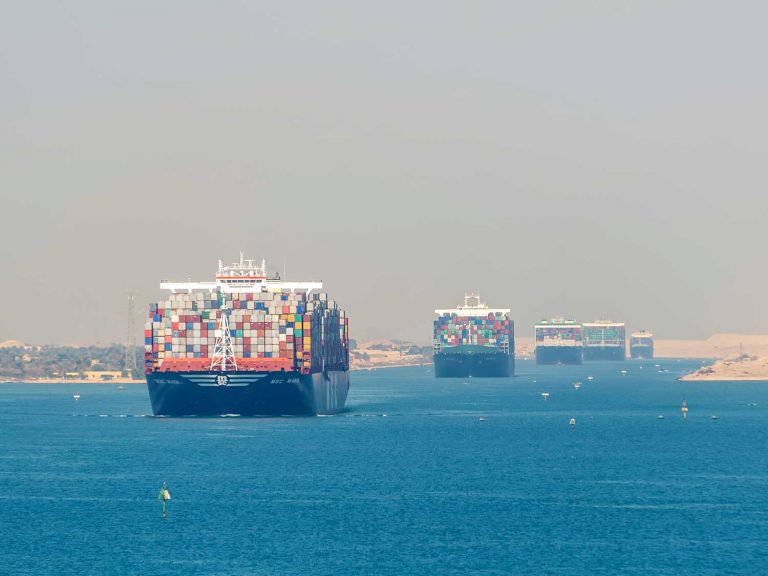
Date:
Carriers inject capacity, but rates stay high
Container carriers are injecting additional capacity into the critical Asia-North Europe trade as they prepare for a strong and prolonged peak season and elevated rates.
With the massive consumer and inventory demand continuing, carriers are transferring capacity from other trades and deploying additional vessels, which will increase market volume by 15.1% over the next 12 weeks, compared to the third quarter in pre-pandemic 2019.
Driven by financial return and redeployment of the restricted supply of vessels, this continues to have a ‘knock on’ effect on other trade lanes, changing the dynamics inadvertently in markets that may not appear to be under ‘pressure’.
The capacity growth rate far exceeds historical trends, and although volume data on the trade lane lags by almost two months, the injection of additional vessels is a clear indication that carriers are preparing for an increase in import volumes to consumer markets and an increase in export demand in manufacturing regions amounting to the same result – demand exceeding supply = increased shipping costs.
Over the course of the last year, the share of the global container shipping fleet deployed in Asia to Europe and Asia to North America trades has increased from 34.6% to 41.4%. The fleet capacity percentage on all East-West mainline trade routes, which includes the Transatlantic on top of the two Asia trades, has risen from 38.5% in July 2020 to 45.9% in July 2021.
The Far East to Europe trade remains the biggest in terms of fleet deployment, with 21.5% of the global fleet (5.25 Million TEU), which represents a capacity increase of 19.7% compared to July 2020.
The main reason why carriers have shifted a larger proportion of their fleets to the East-West trades is of course the high revenue that can be earned there, with massive spot rates and the premiums that some shippers are willing to pay to secure a booking guarantee.
We are expecting the third quarter to be very strong and are already experiencing high numbers of booking requests, but carrier capacity will depend on operational constraints, which we detail rigorously in these bulletins.
Rising volumes will further challenge container ports that have been struggling with months of strong demand, disrupted services and the lowest ever carrier schedule reliability.
Asia-North Europe schedule reliability (vessel arriving within one day of the published arrival) for April, was just 24.4%, down from 72% in April 2020, with 461 vessels arriving more than seven days late from January through May.
In practice vessels on every significant trade are not calling at any North European terminal during agreed and reserved operation windows, which means terminal operations are running on a first-come, first-served basis.
Increasingly ‘industry experts’ (trade press, commentators and consultancies) are suggesting that widespread issues like port congestion and the lack of shipping containers should soon fade as the initial rebound from the pandemic passes.
Likewise, recent months have seen inventory replenishment and safety stock building, to protect against future supply chain disruptions and once sufficient stocks are built, the imbalance of demand and supply should also pass.
We would all welcome such an outcome, at the earliest opportunity, as the current situation traps us in a high rate and limited capacity environment. With demand outstripping available capacity, rates will continue to track steeply upwards.
Time will tell………..
We negotiate rate and volume agreements with carriers across all three alliances, which means we can react quickly to market changes and offer shippers alternative services, in line with their deadlines.
Consider your requirements now for 2022 and beyond – many carriers are looking at longer validity periods for contracts exceeding 12 months and up to 3 years. Planning is essential to ensure that your logistics strategy is complete and predictable for the future. We can assist.
Our fixed validity contracts provide supply chain security and peace of mind, but with space and equipment in such short supply, we recommend a minimum of four weeks visibility and booking window, to secure space on the vessel and get the right equipment positioned.
We provide regular news, market intelligence announcements and updates on the developing ocean and air freight market situation, together with insights on alternative modes and the options available for critical cargo, with deadlines under threat.
Please contact Elliot Carlile or Grant Liddell to discuss your options in achieving your supply chain expectations and deadlines to ensure your business is ‘future proofed’ and all stakeholders within your organisation participate in the logistics cost strategy as an essential element to ensure successful growth throughout the 2020’s.
